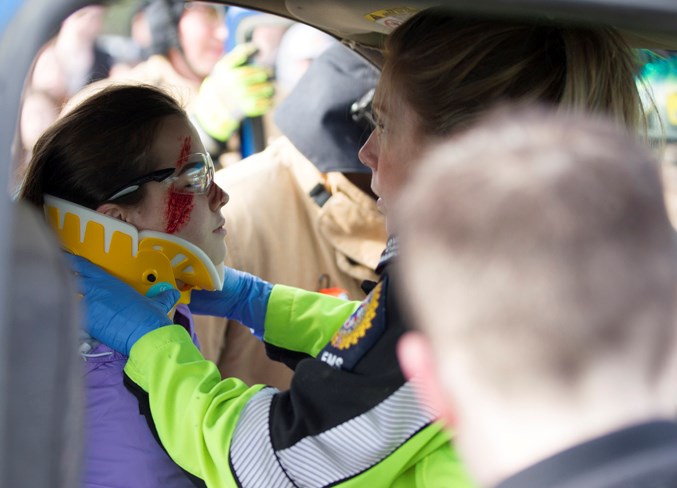Motorists on busy thoroughfares like Highway 2 need to slow down so emergency responders working at accident scenes can do their jobs and save lives, Olds fire Chief Justin Andrew says.
Andrew made that point during a mock collision May 1 at the Church of Jesus Christ of Latter-day Saints in Olds. The annual event is part of an effort by local school and hospital workers, first responders and others to impress upon students the dangers of impaired driving.
He told the crowd of students watching that tow truck operators also need to be able to do their work safely.
"Most of the time they operate by themselves and if they're out on Highway 2, it's a very dangerous position, because how many people think about slowing down or getting over a lane when you see a tow truck in the shoulder," Andrew asked.
"It's the law, but most people don't, because they see flashing yellow lights and they don't think it's that important.
"If you see flashing red lights, yeah, you might slow down and get over. And typically, if you see flashing red and blue lights then you're always worried that you might get a ticket, so of course people pay attention.
"But the truth is that too many people are distracted in what they're doing. They want to see what's happening and they're too focused on their own things," he said.
"All we ask as emergency responders is that you give us the room that we need to work and that we can do it safely, because we want to go home to our families as much as you do. So slow down, give us room and let us do our thing safely."
The mock two-vehicle crash featured a power pole that had fallen across a vehicle.
Andrew said in cases like that, Fortis(Alberta) employees would have to come to safely de-energize that pole so the scene would be a safe working environment for emergency crews.
"It takes three or four hours for them to get a pole, put it back in place and restore power. That's usually pretty quick. Sometimes it can be longer. If it's in the middle of winter that can obviously be challenging as well," he said.



